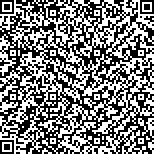| 摘要: |
| 小型底栖生物是海洋底栖环境中数量最占优势的类群,但对于其在深海中的类群构成及分布特点还所知甚少。本研究对西北太平洋深海平原的小型底栖生物的主要类群组成及其分布特点进行了解析,并与相邻海域的小型底栖生物群落结构进行了比较分析。调查海域的水深为4080-6066m,共检获14个小型底栖生物主要类群,小型底栖生物的平均丰度和生物量分别为150.8ind./10cm2和100.3μg dwt/10cm2,其中线虫的平均丰度占93.6%。小型底栖生物总体上呈现沿西北至东南方向数量高,该分布趋势与黑潮延伸体影响区域基本吻合,而在黑潮延伸区两侧数量低。绝大多数小型底栖生物分布于沉积物的0-4cm分层,4-6cm层的小型底栖生物仅占总数的不到10%。本研究中小型底栖生物丰度和生物量均低于相邻深海及冲绳海槽与南海北部深海区的研究结果。小型底栖生物各类群丰度与环境因子的相关性分析显示,小型底栖生物群落组成与沉积物叶绿素a含量和中值粒径显著正相关。生物环境分析(Biota-Environment,BIOENV)结果显示,与小型底栖生物类群结构相关性最高的环境因子组合为水深和沉积物脱镁叶绿素含量。 |
| 关键词: 深海 小型底栖生物 分布 西北太平洋 |
| DOI:10.11693/hyhz20191200265 |
| 分类号:Q178 |
| 基金项目:国家自然科学基金,41706163号;“全球变化与海气相互作用”专项之生物系统分类研究;“科学”号高端用户项目,KEXUE2018G23号;中国博士后科学基金,2018T110713号;本研究所用数据样品由“科学”号科考船采集。 |
|
| COMMUNITY STRUCTURE AND DISTRIBUTION OF MEIOFAUNA IN DEEP-SEA AREAS OF THE NORTHWESTERN PACIFIC OCEAN |
|
PU Si-Chao1,2, SHI Ben-Ze1,3, XU Kui-Dong1,4,3
|
|
1.Laboratory of Marine Organism Taxonomy and Phylogeny, Institute of Oceanology, Chinese Academy of Sciences, Qingdao 266071, China;2.North China Sea Marine Forecasting Center of State Oceanic Administration, Qingdao 266061, China;3.Center for Ocean Mega-Science, Chinese Academy of Sciences, Qingdao 266071, China;4.University of Chinese Academy of Sciences, Beijing 100049, China
|
| Abstract: |
| Meiofauna is the most abundant group of benthos in marine benthic habitats and plays an important role in marine benthic food web. In the present study, the community structure and distribution of meiofauna were analyzed based on the samples collecting from ten stations in the deep-sea area of the northwestern Pacific Ocean, and were compared with the data obtained in the adjacent deep-sea areas. Generally, the mean abundance and biomass of meiofauna in the northwestern Pacific deep-sea area was 150.8ind./10cm2 and 100.3μg dwt/10cm2, respectively, which were much lower than the results in the adjacent deep-sea areas. Among the total 14 main meiofaunal groups sorted, nematode was the most dominant group accounting for about 93.6% of the total meiofaunal abundance. The distribution of the deep-sea meiofauna was generally in concordance with the Kuroshio Extension, along which the meiofaunal standing crops were much higher, while those aside the Kuroshio Extension were lower. Most of the deep-sea meiofauna lived in the 0-4cm layer of sediments, while only less than 10% of meiofauna lived in the 4-6cm layer. Correlation analysis showed that the community of meiofauna were positively correlated to the chlorophyll-a content and median diameter. The BIOENV analysis showed that the combination of water depth and pheophytin content was best correlated with the community of meiofauna. |
| Key words: deep sea meiofauna distribution northwestern Pacific Ocean |
